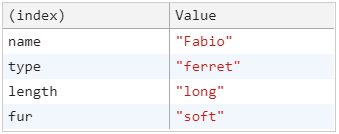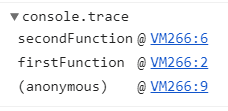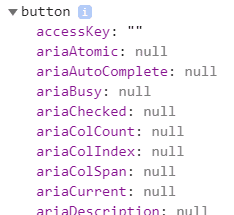Javascript - 6 useful console.log variants
August 02, 2020There are dozens of console methods. In this article I’ll go through some I’ve found the most useful in my work.
console.error()
Prints an error message to the console. Note that this does not actually throw an error, it is purely visual.
console.error("Something went wrong");console.warn()
Prints a warning message to the console. Much like console.error() this is only visual.
console.error("Something went mildly wrong");console.table()
The console.table() method takes an array or an object as argument and displays the data in a table.
Array
const animals = ["ferret", "llama", "donkey"];
console.table(animals);Object
const animal = {
name: "Fabio",
type: "ferret",
length: "long",
fur: "soft",
};
console.table(animal);Array of objects
Perhaps the most useful for logging an array of objects:
const animals = [
{
name: "Fabio",
type: "ferret",
},
{
name: "Larry",
type: "llama",
},
{
name: "Donald",
type: "donkey",
},
];
console.table(animals);console.time()
console.time() starts a timer to track how long an operation takes. console.timeEnd() ends the timer and logs the elapsed time.
Takes a name as an argument.
console.time("myTimer");
let counter = 0;
while (counter < 99999999) {
counter++;
}
console.timeEnd("myTimer");console.trace()
console.trace logs the call stack that exists up until console.trace() was called. Useful in large code bases for debugging purposes.
function firstFunction() {
secondFunction();
}
function secondFunction() {
console.trace();
}
firstFunction();console.dir()
console.dir() is very useful for logging DOM elements. Of course you could do this using console.log(), but this would
give you a DOM representation of the element, whereas console.dir() gives you the object and its properties.
With console.log()
const buttonElement = document.querySelector("button"); // selects an element
console.log(buttonElement);With console.dir()
const buttonElement = document.querySelector("button"); // selects an element
console.dir(buttonElement);







